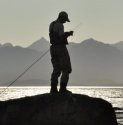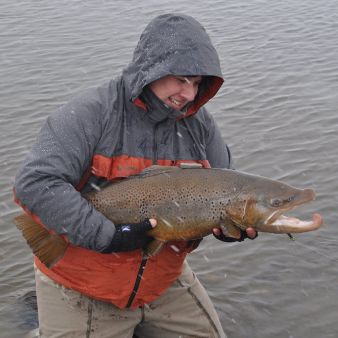Fd: What came first for you, writing or photography?
FG: I’ve always written—I filled notebook after notebook as a kid with trip journals, fiction, poetry, you name it. I started dabbling with a small camera at age 16, but didn’t really take it seriously until years later, when I stumbled across an investigative fisheries story that needed to be told. It was on the Madison River—essentially my backyard. I was by no means a journalist, but the challenge joined with my passion for rivers and I dug for the story. It actually worked pretty well—the opposition I interviewed didn’t take a 21-year-old girl seriously, and was pretty unguarded in sharing information.
On a whim, I shopped the article around to a few magazines and newspapers, figuring out a local publication would pick it up. Several days later the phone rang, and it was a leading fly-fishing publication saying they wanted the piece as a feature but needed photo evidence. So I pooled my savings into a DSLR camera and snuck onto the site under the guise of photographing bighorn sheep. Got the images, the piece ran, and—rather unexpectedly—I had found a new, completely addicting passion. One that is morphing into a career.
Fd: How did fly-fishing get involved?
FG: I’ve always fished. One of my first memories as a kid was of hiding under the casting deck of my dad’s drift boat while floating down the South Fork of the Snake River. I think my first rod was pink. The whole family is pretty deep in the fly-fishing industry, and family conversation more often revolves around the latest line technology or fly pattern theory than anything else. So it’s always kind of been there. To be able to couple fly-fishing, travel, photography and writing? It’s a fine balance, but it seems to be working.
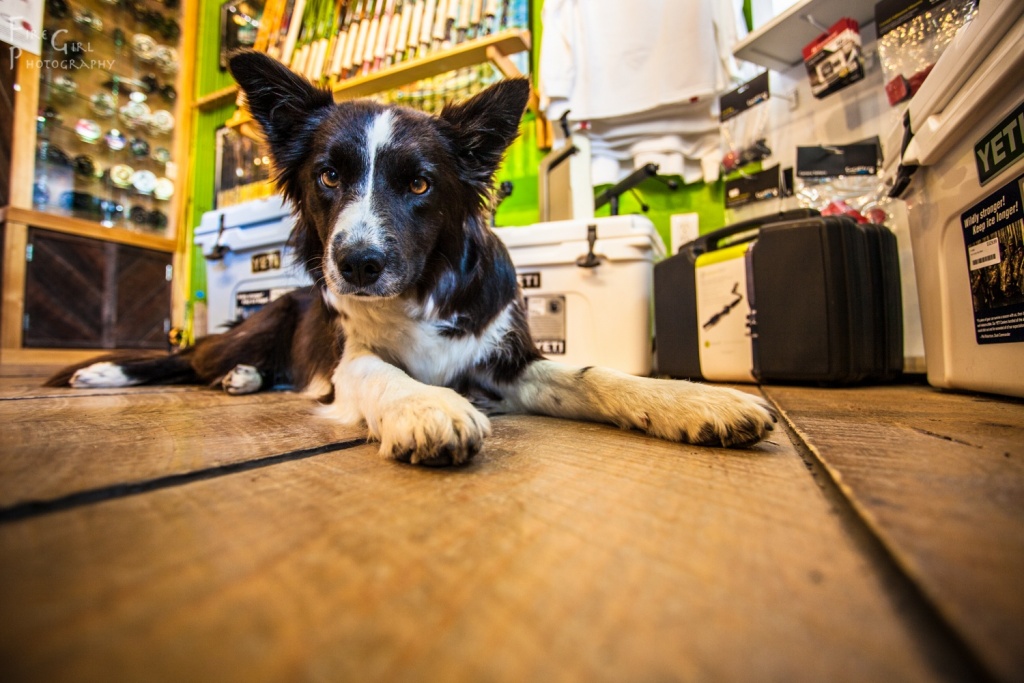 Fd: What were your main influences in regard to fly-fishing photography?
Fd: What were your main influences in regard to fly-fishing photography?
FG: A lot of it is in the family. I grew up watching my mom and dad wet-wade in Teva sandals and decorate the Christmas tree with fly ornaments. They got my brother, Jake, and I outside at every possible instance. I can’t imagine a better childhood than one spent bouncing around the wide-open spaces of the American West, and I credit that exploring at a young age for the respect I have for the outdoors today. Jake, in particular, continues to explore and fish in true Montana style. He has started picking up a camera, and his shots never fail to make me both homesick and proud of my little brother.
There are so many outdoor photographers, but a few fishy guys stand out for both their talent behind the lens and their humble, down-to-earth attitudes. Bryan Gregson, Russ Schnitzer, Adam Barker, and Alex Landeen come to mind. Guys who are wickedly talented but don’t let it go their heads. It’s a small industry, and on a shoot I find I value a good, fun, professional team more than anything.
Fd: What would you recommend to the beginners that want to get better pictures of their trips and catches?
FG: I actually just wrote a feature about this for Orvis that will appear in one of their spring catalogs. A couple of points come readily to mind, but perhaps the most important is this: get out and shoot. You could be the most talented photographer in the world, but if you are sitting at home on your couch, not much is going to happen. Some of the most promising images I’ve been privileged to capture happened when I wasn't really out looking for a shot. I happened to be fishing, or hiking, or driving—and there it was. Sometimes the light is magic, and if you don't have a camera at hand you’ll be beating your head against the ground. Keep it close, keep it accessible, and keep your eyes open.
It’s so much less about expensive gear, and more about getting out and exploring. Moving beyond your comfort zone. There are a couple shots I have that are slightly blurry because my hands were shaking with adrenaline and maybe a bit of fear. They might be worthless for publication, but those images mean the world to me, as they meant I had the frame of mind to get a shot when, in all reality, I should have been running away. Maybe it’s a sign of maturity, I don’t know. I’m 26 and learning that the best shots are those with a lot of emotion behind the lens. Clinical doesn't carry emotion. It doesn’t share stories.
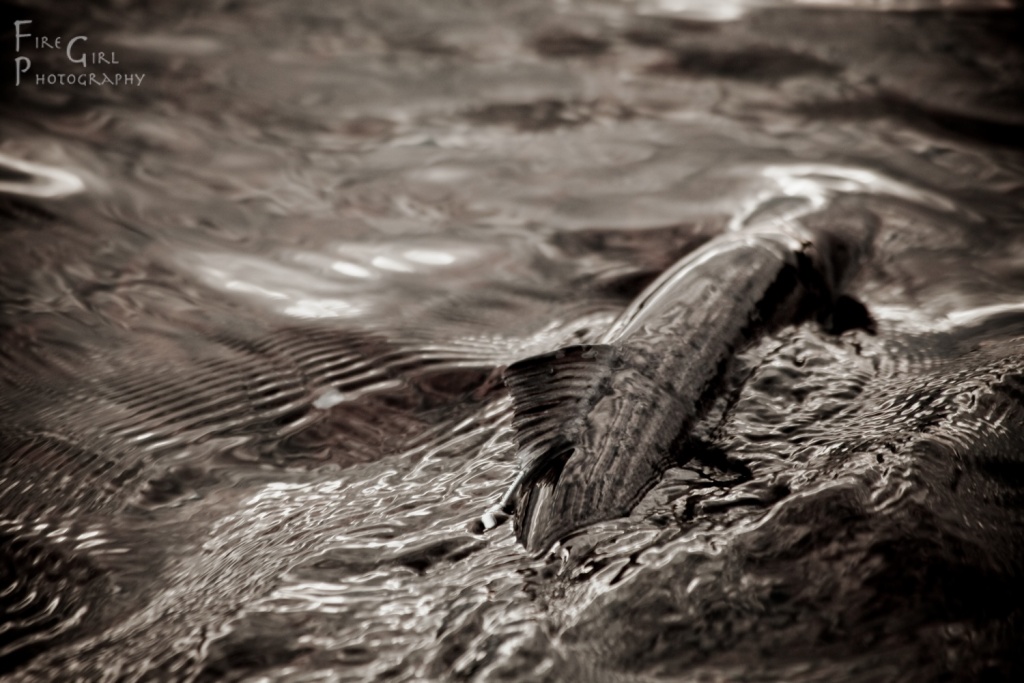 Fd: We've seen great pictures from the Ponoi in Russia. How was that experience? Any other trip that you remember in a special way?
Fd: We've seen great pictures from the Ponoi in Russia. How was that experience? Any other trip that you remember in a special way?
FG: The Ponoi was incredible. I would go back in a heartbeat. I was assistant manager in the camp, which meant there wasn’t much sleep, or much time for photography. In an ideal world, I’d go back as a dedicated photographer and have more time for it. But I loved the people—the Russians were amazing, and the guide team was staffed with good guys. The scenery was astounding, harsh and forbidding and made you wonderfully small. Lots of good memories—from catching my first Atlantic salmon, to games of perudo at the camp bar, to vodka-fuelled midnight parties under the never-setting sun. Met some amazing people I still keep touch with today, and I look forward to returning someday.
I was recently in Belize for a project with Orvis, and would have been happy staying forever. Talk about a target-rich environment for the camera. Even though we had stubbornly rainy winter, the highly pigmented colors of the buildings and the place itself couldn't be dampened. The locals were some of the nicest folks I’ve ever had the pleasure to share rum and conch with. I only got to fish for a few hours, but it was enough to get a rather addicting look at flats fishing. Got a few bonefish to hand and had follows from tarpon. I’ll be back.
In the summer of 2013, I worked at Headhunters Fly Shop in Craig, Montana, on the mighty Missouri River. The goal of the season was to document daily life in small town Montana, to really get an intimate look at the fly-fishing lifestyle in one of the iconic locations. It was an experience to remember, and I now feel like I have a family of pretty awesome people residing up on that river. Getting close to your intended project—living the life, good and bad—is crucial. And those folks talk the talk and walk the walk.
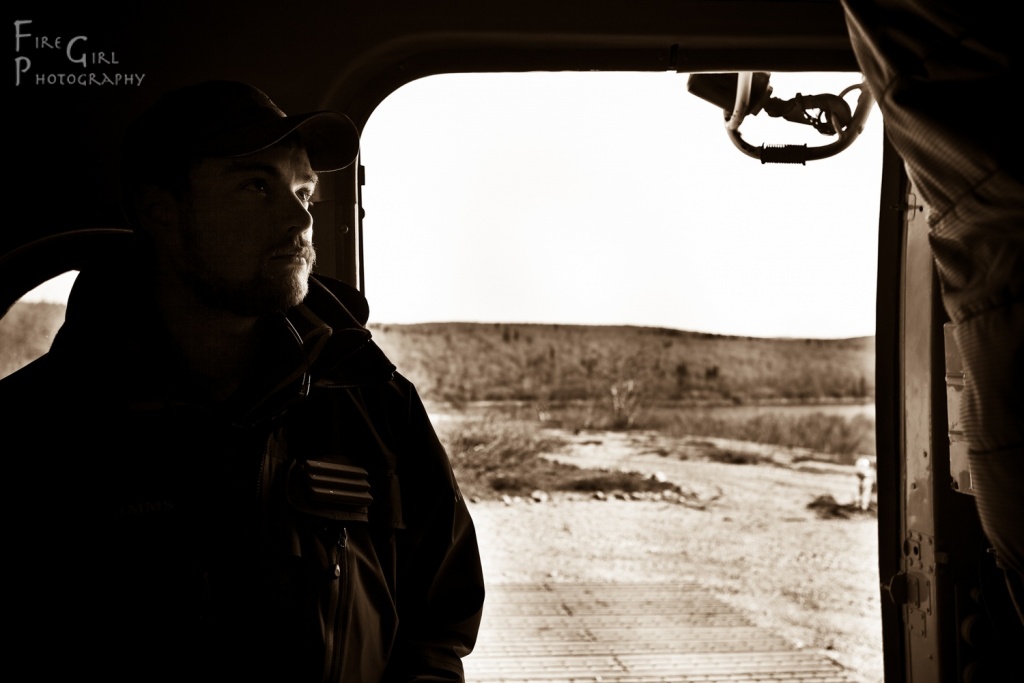 Fd: What is it that you enjoy the most about your job? And what does fly fishing mean to you?
Fd: What is it that you enjoy the most about your job? And what does fly fishing mean to you?
FG: Hands-down, my favourite part of the job is traveling and experiencing things outside of the ordinary. The reality is being a journalist is maybe 15% in the field gathering assets, and 85% building and managing a business. It’s not as fun as people think it is (some days are, though!). So the time I can actually be out adventuring are, by far, the most precious.
For me, fly-fishing is a pause. No matter how crazy it gets, no matter how few hours of sleep I got the night before, casting is calming. Even just watching a talented caster is calming. And watching water is the very best of all. Fly fishing is a universal language—from the Belizean flats to the far reaches of the Russian tundra, fishing guides are a breed unto themselves.
The best anglers are those without ego. They do the sport for themselves, not for the reputation or the glory or the grip and grins. They enjoy the water and the rhythm of the cast. My brother is like this. There are so many folks in this industry for the wrong reasons; it’s inspiring to see those who are in it for the right.
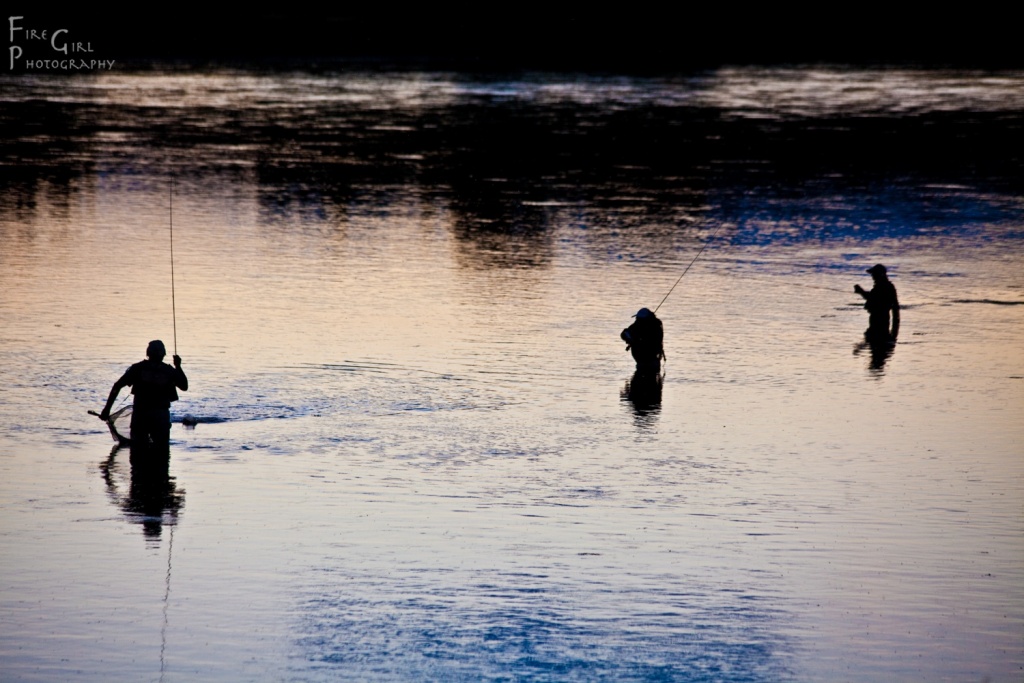 Fd: What’s next for you?
Fd: What’s next for you?
FG: Who knows? Right now this Western girl is surviving in the Northeast, writing and photographing for The Orvis Company. My roots are in Montana, and I have no doubt I’ll return home eventually. But until then, there are a lot of miles to be logged, images to be captured, and stories to be told. I know I’ll continue to grow Fire Girl with a vengeance—first quarter 2015 is going to be my busiest yet—but beyond that I’m trying to keep options open and see what comes around the corner.
The best adventures are the ones you don’t anticipate. But will definitely be getting home to Montana for some fishing this spring… I need some time on my water, in my mountains.
FG: I’ve always written—I filled notebook after notebook as a kid with trip journals, fiction, poetry, you name it. I started dabbling with a small camera at age 16, but didn’t really take it seriously until years later, when I stumbled across an investigative fisheries story that needed to be told. It was on the Madison River—essentially my backyard. I was by no means a journalist, but the challenge joined with my passion for rivers and I dug for the story. It actually worked pretty well—the opposition I interviewed didn’t take a 21-year-old girl seriously, and was pretty unguarded in sharing information.
On a whim, I shopped the article around to a few magazines and newspapers, figuring out a local publication would pick it up. Several days later the phone rang, and it was a leading fly-fishing publication saying they wanted the piece as a feature but needed photo evidence. So I pooled my savings into a DSLR camera and snuck onto the site under the guise of photographing bighorn sheep. Got the images, the piece ran, and—rather unexpectedly—I had found a new, completely addicting passion. One that is morphing into a career.
Fd: How did fly-fishing get involved?
FG: I’ve always fished. One of my first memories as a kid was of hiding under the casting deck of my dad’s drift boat while floating down the South Fork of the Snake River. I think my first rod was pink. The whole family is pretty deep in the fly-fishing industry, and family conversation more often revolves around the latest line technology or fly pattern theory than anything else. So it’s always kind of been there. To be able to couple fly-fishing, travel, photography and writing? It’s a fine balance, but it seems to be working.
 Fd: What were your main influences in regard to fly-fishing photography?
Fd: What were your main influences in regard to fly-fishing photography?FG: A lot of it is in the family. I grew up watching my mom and dad wet-wade in Teva sandals and decorate the Christmas tree with fly ornaments. They got my brother, Jake, and I outside at every possible instance. I can’t imagine a better childhood than one spent bouncing around the wide-open spaces of the American West, and I credit that exploring at a young age for the respect I have for the outdoors today. Jake, in particular, continues to explore and fish in true Montana style. He has started picking up a camera, and his shots never fail to make me both homesick and proud of my little brother.
There are so many outdoor photographers, but a few fishy guys stand out for both their talent behind the lens and their humble, down-to-earth attitudes. Bryan Gregson, Russ Schnitzer, Adam Barker, and Alex Landeen come to mind. Guys who are wickedly talented but don’t let it go their heads. It’s a small industry, and on a shoot I find I value a good, fun, professional team more than anything.
Fd: What would you recommend to the beginners that want to get better pictures of their trips and catches?
FG: I actually just wrote a feature about this for Orvis that will appear in one of their spring catalogs. A couple of points come readily to mind, but perhaps the most important is this: get out and shoot. You could be the most talented photographer in the world, but if you are sitting at home on your couch, not much is going to happen. Some of the most promising images I’ve been privileged to capture happened when I wasn't really out looking for a shot. I happened to be fishing, or hiking, or driving—and there it was. Sometimes the light is magic, and if you don't have a camera at hand you’ll be beating your head against the ground. Keep it close, keep it accessible, and keep your eyes open.
It’s so much less about expensive gear, and more about getting out and exploring. Moving beyond your comfort zone. There are a couple shots I have that are slightly blurry because my hands were shaking with adrenaline and maybe a bit of fear. They might be worthless for publication, but those images mean the world to me, as they meant I had the frame of mind to get a shot when, in all reality, I should have been running away. Maybe it’s a sign of maturity, I don’t know. I’m 26 and learning that the best shots are those with a lot of emotion behind the lens. Clinical doesn't carry emotion. It doesn’t share stories.
 Fd: We've seen great pictures from the Ponoi in Russia. How was that experience? Any other trip that you remember in a special way?
Fd: We've seen great pictures from the Ponoi in Russia. How was that experience? Any other trip that you remember in a special way?FG: The Ponoi was incredible. I would go back in a heartbeat. I was assistant manager in the camp, which meant there wasn’t much sleep, or much time for photography. In an ideal world, I’d go back as a dedicated photographer and have more time for it. But I loved the people—the Russians were amazing, and the guide team was staffed with good guys. The scenery was astounding, harsh and forbidding and made you wonderfully small. Lots of good memories—from catching my first Atlantic salmon, to games of perudo at the camp bar, to vodka-fuelled midnight parties under the never-setting sun. Met some amazing people I still keep touch with today, and I look forward to returning someday.
I was recently in Belize for a project with Orvis, and would have been happy staying forever. Talk about a target-rich environment for the camera. Even though we had stubbornly rainy winter, the highly pigmented colors of the buildings and the place itself couldn't be dampened. The locals were some of the nicest folks I’ve ever had the pleasure to share rum and conch with. I only got to fish for a few hours, but it was enough to get a rather addicting look at flats fishing. Got a few bonefish to hand and had follows from tarpon. I’ll be back.
In the summer of 2013, I worked at Headhunters Fly Shop in Craig, Montana, on the mighty Missouri River. The goal of the season was to document daily life in small town Montana, to really get an intimate look at the fly-fishing lifestyle in one of the iconic locations. It was an experience to remember, and I now feel like I have a family of pretty awesome people residing up on that river. Getting close to your intended project—living the life, good and bad—is crucial. And those folks talk the talk and walk the walk.
 Fd: What is it that you enjoy the most about your job? And what does fly fishing mean to you?
Fd: What is it that you enjoy the most about your job? And what does fly fishing mean to you?FG: Hands-down, my favourite part of the job is traveling and experiencing things outside of the ordinary. The reality is being a journalist is maybe 15% in the field gathering assets, and 85% building and managing a business. It’s not as fun as people think it is (some days are, though!). So the time I can actually be out adventuring are, by far, the most precious.
For me, fly-fishing is a pause. No matter how crazy it gets, no matter how few hours of sleep I got the night before, casting is calming. Even just watching a talented caster is calming. And watching water is the very best of all. Fly fishing is a universal language—from the Belizean flats to the far reaches of the Russian tundra, fishing guides are a breed unto themselves.
The best anglers are those without ego. They do the sport for themselves, not for the reputation or the glory or the grip and grins. They enjoy the water and the rhythm of the cast. My brother is like this. There are so many folks in this industry for the wrong reasons; it’s inspiring to see those who are in it for the right.
 Fd: What’s next for you?
Fd: What’s next for you?FG: Who knows? Right now this Western girl is surviving in the Northeast, writing and photographing for The Orvis Company. My roots are in Montana, and I have no doubt I’ll return home eventually. But until then, there are a lot of miles to be logged, images to be captured, and stories to be told. I know I’ll continue to grow Fire Girl with a vengeance—first quarter 2015 is going to be my busiest yet—but beyond that I’m trying to keep options open and see what comes around the corner.
The best adventures are the ones you don’t anticipate. But will definitely be getting home to Montana for some fishing this spring… I need some time on my water, in my mountains.

